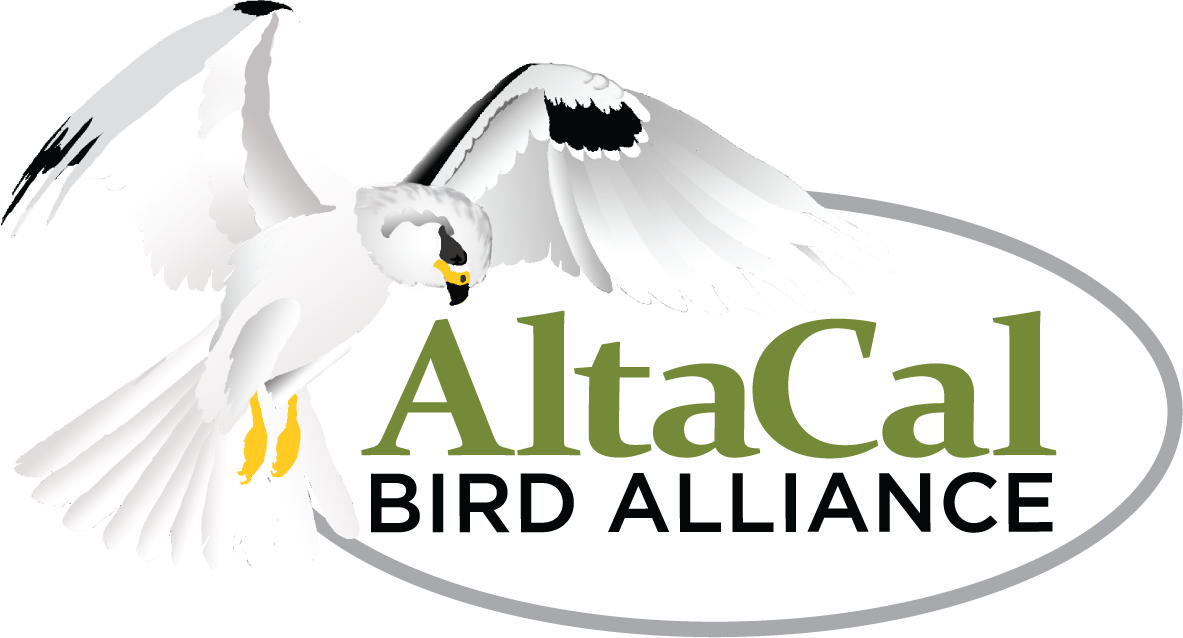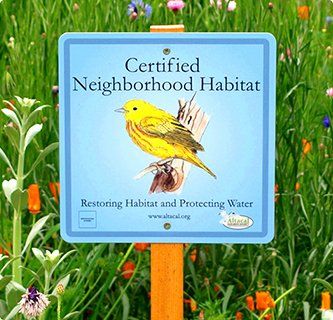Restoring Habitat and Protecting Water
Participation is open to residents of Butte, Glenn, and Tehama Counties in Northern California.
The goal of the Certified Neighborhood Habitat Program is to support community members interested in converting unused lawns to natural, drought-tolerant California landscaping and habitat.
Every yard counts! By acting now, we can conserve and protect valuable water resources and rebuild needed wildlife corridors within our community. Create a Native Habitat yard and receive a Certified placard from AltaCal!
Certification fee is a sliding scale of $20-$50, due when placard/yard sign is rewarded.
Contact:
Contact Us at neighborhoodhabitat.aas@gmail.com
Contains:
- Self-assessment
- Plant recommendations
- Demonstration gardens
- Guidelines for certification, and more
1. Plan your new garden. Make a sketch of your
property or area, identifying how you plan to
use the space. Determine where you need:
a. screening
b. shade
c. outdoor living spaces (patios, walkways,
children’s play area, dog run, edibles, etc.)
2. Kill existing lawn. There is no need to remove
the lawn, unless you have Bermuda grass,
bindweed, or other pernicious exotics. Cover
the area heavily with mulch (See Mulch below)
or compost. Make sure existing trees continue
to get watered.
3. Choose plants that are appropriate for your
location. Visit www.calscape.org and use your
zip code to find the right native plants for your
location. Choose a variety of plants of different
sizes, types, and blooming times. Note the
plants’ mature sizes to determine how many
you will need. Notice their sun/shade and
water requirements; group plants with the
same needs together.
4. Install infrastructure & hardscape: boulders;
irrigation mainlines (if a new system is needed)
and water lines for fountains and birdbaths;
construct patios, walkways, ponds, berms, and
swales, fences, pergolas; etc.
5. Buy plants. Bring your proposed plant list,
with quantities, to a nursery or plant exchange
group. Try to stick to your list; you can always
add more later. Make sure plants were not treated
with any pesticides.
6. Plant. October thru March is the best time to
plant. Start by placing and planting the large
trees and shrubs first, then everything else.
Dig holes only as deep as the root ball of the
potted plant.
7. Install irrigation drip lines to plants (or
convert existing lawn sprinklers to drip or
soaker system) to use until new plants are
established. During the dry seasons, you will
have to water the young plants for the first
year or more. Allow plants to nearly dry out
between each watering.
8. Mulch. Apply 3”-4” of mulch to conserve
water and discourage weeds. Keep mulch a
few inches away from the base of the plants.
Ground barks are great for woody plants
(avoid Eucalyptus, Walnut, Willow, & Bamboo).
Gravel works for desert plants. Do not mulch
areas to be seeded. Do not use landscape
fabric, weed cloth, or plastic sheeting under
mulch; cardboard sheets under mulch work to
discourage most weeds and grasses.
9. Add enhancements. Birdbaths, rock piles,
nurse logs, bird & bat houses, bee hotels. Do
not add unnecessary outdoor lighting.
10. Get certified! Email neighborhoodhabitat.aas@gmail.com for certification.
Encourage your neighbors with a
Certified Neighborhood Habitat sign!
For more information on each of these steps, please refer to our Gardening and Wildlife Resources page for helpful websites.
Enjoy your hard work, be patient, & watch nature return. EVERY YARD MATTERS!

